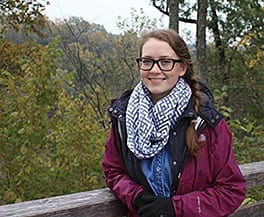“Latvian culture” is inescapably tied to “Latvian identity,” both colloquially and in policy language. Acceptance of and respect for Latvian culture is also a cornerstone of Latvian integration legislation, which is particularly geared toward individuals speaking Russian as their first language. With the support of the AABS Dissertation Grant, my research focuses on minority participation in Latvian cultural life, particularly through the National and Youth Song and Dance Celebrations. These UNESCO-recognized festivals are a keystone of “Latvian identity,” but participation is not limited to those with “latvietis” stamped in their passport. Particularly in the school youth format, the Celebrations provides a mechanism for minority students to access a form of Latvian cultural identity that can affect their relationship to the Latvian state and “nation.” This extends beyond the days of the festival into the years prior through preparation in school choirs and folk dance collectives.
The AABS Dissertation Grant has helped to fund the continuation of my fieldwork in Rīga and rural Latgale, which has a significant minority population that is arguably more closely integrated than in urban settings. In Daugavpils municipality alone, more than 300 students of all backgrounds voluntary participated in the 2015 youth Song and Dance Celebration — more competed for the opportunity. This research investigates why and what that may mean for the future of Latvian identity and integration.
This research expands on recent studies of Latvia’s minority students that indicate students feel belonging to the Latvian territory, but are distanced from social and political processes (Laizāne, et.al., 2015). My preliminary findings, based on participant observation, interviews and focus groups conducted in and around Riga and Daugavpils, suggest that minority students use the festival as an opportunity to connect with ethnic Latvians and the larger nation. In learning the repertoire, minority youth are active in a national acculturation process; in being physically present, they become a visible part of the “nation”. Investigating the effects of participation in Latvian cultural activities on minority youth provides a window into the development of civic-cultural identity and horizontal acculturation processes.

